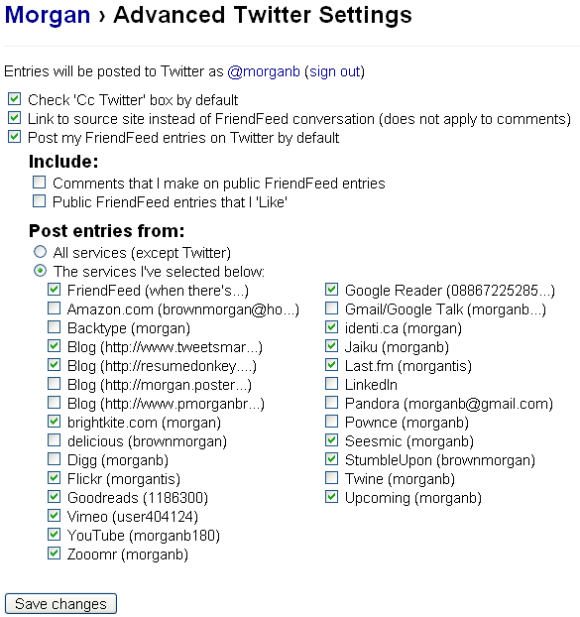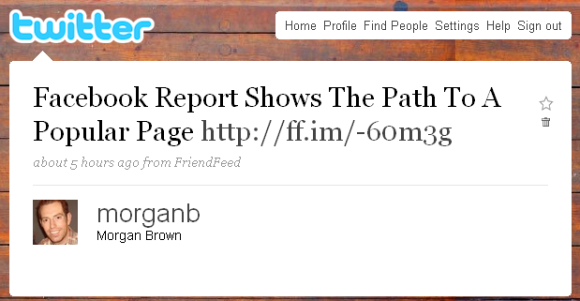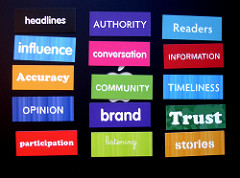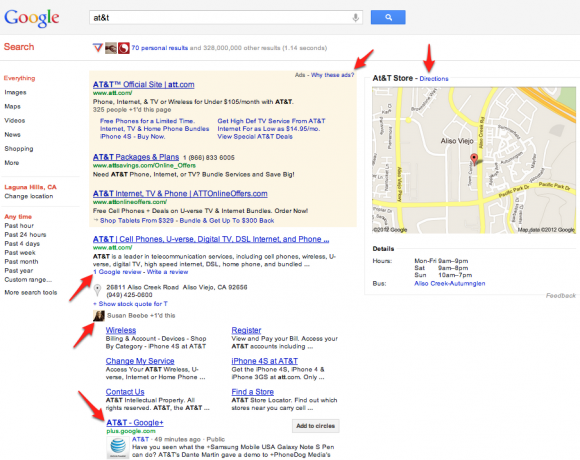 Klout bills itself as a network of influencers that brands can tap into to leverage peer recommendations across social networks. This is based on the idea that friend recommendations are more valuable than traditional advertising because friends trust each others’ recommendations more than ads. The way it works, as sold on the website, is that you tap influencers in topic areas that are relevant to your brand, you offer them a perk, they love it and you, and then the influencers go out and spread your message via word-of-mouth on the social networks they’re most active on. It sounds good, but does it work for brands? The answer is no and yes.
Klout bills itself as a network of influencers that brands can tap into to leverage peer recommendations across social networks. This is based on the idea that friend recommendations are more valuable than traditional advertising because friends trust each others’ recommendations more than ads. The way it works, as sold on the website, is that you tap influencers in topic areas that are relevant to your brand, you offer them a perk, they love it and you, and then the influencers go out and spread your message via word-of-mouth on the social networks they’re most active on. It sounds good, but does it work for brands? The answer is no and yes.
Quick Background
I ran social marketing for a company recently that used Klout to drive new membership. We ran two campaigns, described below. One which failed miserably and one which was a huge success. I’ve described them below and provided actual numbers from Klout. The goal of these campaigns was to spread awareness of a new service, drive membership sign-ups and purchases. Your mileage will of course vary based on your goals.
How Klout Doesn’t Work – Test Campaign #1
You could be forgiven if you think that the best way to leverage their service is to target the most influential influencers in the Klout network for the topic you care about and then let them spread your message far and wide. I hope I’m forgiven anyway. This is what I initially thought, and was proven wrong. If you’re going to run a Klout campaign as a brand, this is definitely not the way to do it. I know from experience, dude. Let’s take a look at the messy details.
Here’s what we did with our first Klout campaign:
- Identified 155 social influencers who had high Klout scores in Los Angeles, CA, a target market for our member acquisition efforts.
- Offered a Klout perk to them of $100 in free stuff on our site, plus the ability to invite anyone in their network to join the private beta and get $10 to try us out too.
The thinking was that by giving these social influencers a sufficient amount of money to try the service and a way to give their followers and friends early access and a discount, that they would be stoked on the perk and spread the word. Friends would sign up for the discount and early access.
The cost of the campaign was $5,000 plus the cost of the coupons, which was dependent on the redemption rate of the perk.
The results:
- Out of 155 influencers invited, 79 claimed the perk.
- In addition to the 79 influencers we received an additional 173 downstream, referred members.
- Each influencer sent 2.7 tweets on average, and along with downstream contributing tweets resulted in 302 tweets.
- True reach, which represents how many people were reached by tweets was 426,165.
- Impressions were 1.47 million.
- Cost to acquire a member was $19.84 and the cost per purchaser was scary high; because most redeemed and used the $100.
What we learned:
- Influencers were generally grateful of the perk, and some couldn’t believe it was $100. We definitely got some short-term brand awareness there.
- The influencers didn’t really influence all that much. On average they had enough Klout to drive two extra members to sign up for the service. Since most of them had 10’s of thousands of followers, this is a pretty low activation rate.
- The member acquisition cost was way out of whack with our model. It was nearly 20x what we look to pay for a member acquisition campaign.
How Klout Does Work – Test Campaign #2
You can probably guess that we were really disappointed by the costs and results of the first campaign. It was pretty clear that as an unknown brand you can’t buy word of mouth via Klout, regardless of the size of the perk. And even if you get a bit of word-of-mouth it doesn’t necessarily translate into action. We spoke with our friends at Klout about this and to their HUGE credit, they offered to run another campaign at no additional cost using a different model.
Here’s what we did with our second Klout campaign:
- Target 10,000 Klout users in New York, regardless of Klout score.
- Make the perk free early access to the site and a $25 off coupon for any purchase they make.
- No referral credit for people they told. It was just $25 off for any perk recipient.
The Results:
- 8,985 perk redeemers
- 1.3 Tweets/Shares per influencer = 12,418 Tweets and shares (40x the first campaign)
- True Reach of 1.93 million based on 8,985 participating influencers
- 5.9 million impressions based on True Reach (3x the first campaign)
- Cost to acquire a member was less than $1, even after adding in the $25 per purchaser credit
- Cost to acquire a purchaser was just the $25. Both the cost per purchaser and cost per member were well in our target budgets.
- Even if you factor in the $5,000 for the campaign the cost per member was just over a dollar (including coupon redemptions) and about $40 per purchaser – which were well within target acquisition costs.
What we learned:
- The power of Klout is to reach a large number of people with an offer via Twitter.
- Counting on the viral sharing is risky – reaching the masses is the better bet.
- Klout score doesn’t matter. Everyone’s money is good, and the high scorers don’t move the needle in terms of a campaign of this size.
- We saw a 3x lift in impressions and a 40x lift in social media mentions by going direct to a larger audience rather than relying on viral word of mouth.
How Klout Really Works
If you think about Klout, and you think about scores and whether they’re accurate or inaccurate, you’ll see from the above that that debate is really a silly argument. Klout doesn’t work because they have a database of influencers that get your word out; it works because they have a huge database of people, period. Score is irrelevant to campaigns like these. If you’re going for scale don’t try to tap influencer networks to get word of mouth referrals. The influencers carry less influence than you think and apathy is a hard thing to overcome on social networks.
Instead, reach for as many people as you can, and get them all to opt-in. You’ll get more scale, you get some great word-of-mouth because these lower Klout score folks are pumped to get a perk, and you’re reaching a well-connected, great customer.
One of the things we really learned was that a Klout user was a really great customer for the site. They bought more on average, they bought more often and they referred more friends (through our internal refer-a-friend program) than almost any other audience other than those users who were referred by existing site users.
These results obviously have big implications with regard to a user’s score and it’s importance or need for accuracy, and it has big implications for how you choose to run a Klout campaign vs. how you might initially think that it works. I hope it also reflects well on Klout – as a company they work really hard to make sure you’re successful. They went above and beyond to find a way to make our program work, and that’s all you can hope for from an advertising partner.
I hope it’s helpful in the Klout discussion – especially for marketers and brands thinking of using Klout to market their business.




 People love to claim stuff “dead” on the Internet. It seems everyday something is dying or already dead. Frankly, the pace of extinction around these parts is exhausting. And, of course, the rhetoric is usually completely overblown and, well, wrong. So it is with the death of blogging. As Twitter user growth soars (1928% YOY to be precise) and people flock to Facebook in droves, pundits love proclaiming that the statusphere is the new, new blogging. And with equal joy it’s corollary blogging obituary.
People love to claim stuff “dead” on the Internet. It seems everyday something is dying or already dead. Frankly, the pace of extinction around these parts is exhausting. And, of course, the rhetoric is usually completely overblown and, well, wrong. So it is with the death of blogging. As Twitter user growth soars (1928% YOY to be precise) and people flock to Facebook in droves, pundits love proclaiming that the statusphere is the new, new blogging. And with equal joy it’s corollary blogging obituary.
